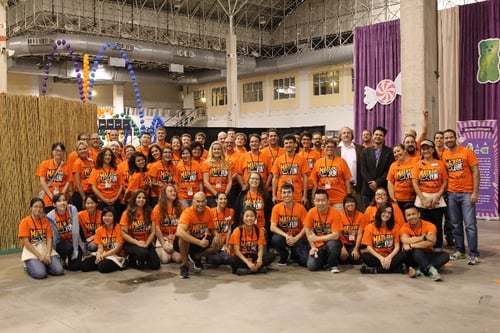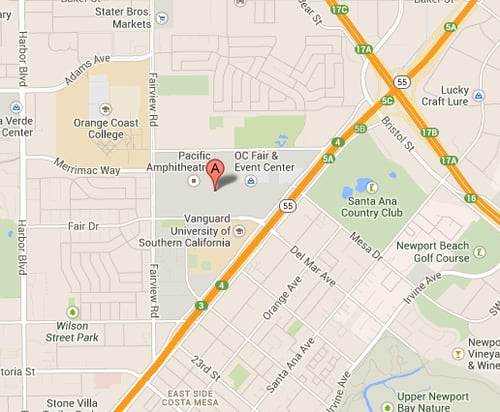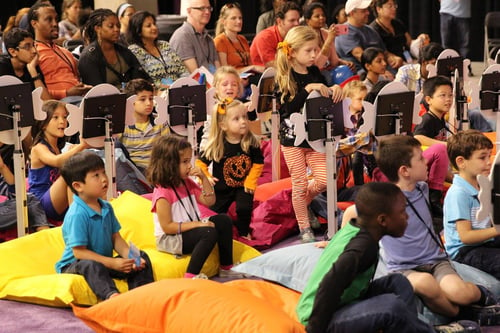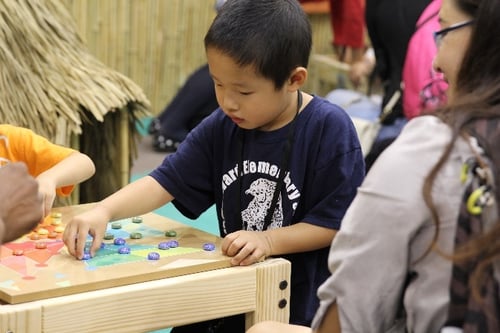
How does a “pop-up” math museum come to life? For the third year in a row, MIND Research Institute is holding a free, community Math Fair, complete with mathematically-inspired exhibits, performances, workshops and more. But how do we make the Math Fair happen?
Let’s take a peek behind the scenes at the Math Fair. A lot of key strategies come into play when considering the exhibit experiences for the Fair, including interactivity, mobility, accessibility, deep learning opportunities and of course, fun! Here are just a few strategies to create a great learning event.
First and foremost, gather together those who will contribute. At MIND, we call on our math content specialists and lead experience designers (whether engineers or education specialists). We also take a look at what external partners can help make the exhibit experience come to life through volunteers and sponsorship. The best part of this collaboration is that the team consists of individuals contributing unique and valuable perspectives toward one large goal.

The team that put together the 2015 Math Fair in Chicago
While a venue or space may pose logistical challenges for set-up, it may be best suited for those actually attending the event. Consider if those you’re inviting to attend already know the venue and if it’s a family-friendly environment. Also, will participants have easy access to food concessions? Is the venue accessible via public transportation and do they provide parking? The home of our 2016 Math Fair is the OC Fair & Event Center in Costa Mesa, CA. Most folks in Orange County know it because of the OC Fair, and the venue hosts numerous family-friendly events throughout the year.
 Map of the OC Fair & Event Center, located near the 405 and 55 in Costa Mesa, CA.
Map of the OC Fair & Event Center, located near the 405 and 55 in Costa Mesa, CA.
Sometimes the actual resources needed to execute your vision exceed your projected budget. Honing in on the essence of the vision is key here, so you can remove anything extraneous and evaluate if the resources truly enhance the experience. When we were developing the Math Mystery Theater, we had really great ideas for the décor. Turns out that some of those things weren’t actually necessary to bringing about the theater-type experience we wanted, so we scaled back and looked for ways to do what we wanted to do through technology. The result? An incredible, immersive, and deep learning experience! Also, when we develop the individual exhibits, we look for funding partners like Hyundai and Microsemi, both of whom have generously funded the Math Fair.

Children and families enjoy the Math Mystery Theater at the 2015 Math Fair in Chicago.
Start by thinking about the theme, storyline and learning concepts you want to convey. How will participants flow through the space? What age range is the content appropriate for? What kind of décor, signage and materials would enhance the participant’s learning experience? Is the content accessible? Is the physical space accessible? In designing the South of the Sahara exhibit, our team paid close attention to how people would use the space, and how we could maximize engagement and interactivity.

South of the Sahara, unveiled in Chicago in 2015, is a prime example of designing for user experience.
Gather a group of friends, family, colleagues, to test out your activities. Ask for their feedback and listen to their questions. This allows you to iterate on the content to make it even better before it goes live! For our Locked Up exhibit, we tested out the various activities, and got great feedback on how to train volunteers and how to tailor the directions for the activities. This helped improve the whole exhibit at the Math Fair tremendously!
Now that you have a few key strategies, are you ready to create your own Math Fair? Well, how about joining us for our 3rd annual Math Fair in Costa Mesa, CA on Saturday November 5, 2016? Sign up to volunteer or register to attend!

Mike Limon is Director of Programs and Events at MIND Research Institute.
Comment